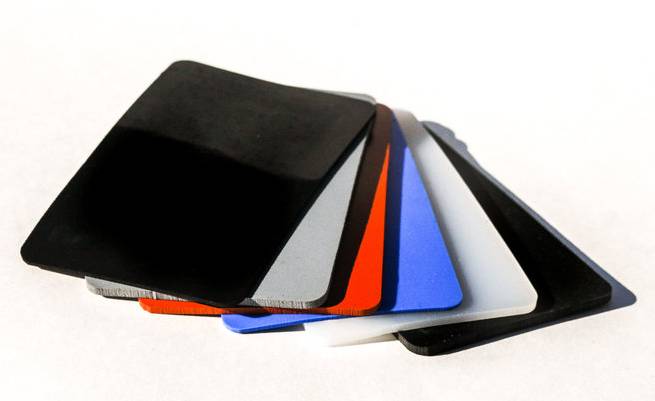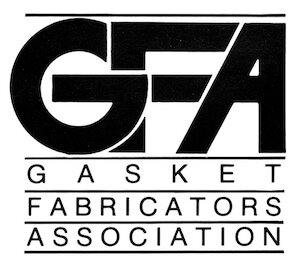USP Class VI sealing products encompass a broad spectrum of geometries, materials, and manufacturing approaches. From simple O-rings and gaskets to complex diaphragms, valve seats, and custom molded parts, these seals play a critical role in ensuring product safety, regulatory compliance, and reliable performance in high-purity environments. Engineers selecting these seals must carefully evaluate sterilization resistance, chemical compatibility, and extractables, all while aligning with industry-specific regulatory frameworks.
ElastaPro makes USP Class VI silicone materials as solid silicone sheet and uncured silicone compound. For service, quality, value and speed, contact ElastaPro.
Types of USP Class VI Sealing Products
There are seven major types of USP Class VI sealing products.
- O-rings
- Gaskets
- Diaphragms
- Sealing Profiles and Extrusions
- Sanitary Seals and Tri-Clamp Gaskets
- Custom Molded Sheets
- Valve Seats and Sealing Components
The following sections describe them.
1. O-Rings
O-rings are the most common and versatile USP Class VI sealing products used in biomedical and pharmaceutical equipment.
-
Materials: USP Class VI–certified elastomers such as silicone, fluorosilicone, EPDM (ethylene propylene diene monomer), and FKM (fluoroelastomer). Silicone and EPDM are especially common due to their chemical resistance and cleanroom compatibility.
-
Applications: O-rings are used in syringe pumps, bioreactors, peristaltic pumps, chromatography systems, and aseptic connectors. Their circular geometry provides uniform compression and reliable sealing even under pressure cycling.
-
Key Benefits: Ease of installation, broad chemical compatibility, and resistance to sterilization methods such as autoclaving, gamma irradiation, and ethylene oxide (EtO) treatment.
2. Gaskets
Gaskets provide flat sealing between two rigid surfaces, typically flanges.
-
Materials: USP Class VI silicone sheets, PTFE (polytetrafluoroethylene) composites, and perfluoroelastomers (FFKM). PTFE-encapsulated silicone gaskets are often specified when chemical resistance and biocompatibility are both required.
-
Applications: Sterile process piping, pharmaceutical mixing tanks, bioprocessing skids, and clean-in-place (CIP) systems. In these environments, gaskets prevent contamination and maintain sterile boundaries.
-
Key Benefits: Large sealing surface, customizable geometry, and high resistance to process fluids ranging from solvents to biological media.
3. Diaphragms
Diaphragms are flexible membranes that separate two environments while allowing pressure or mechanical force to be transmitted.
-
Materials: USP Class VI–approved silicone, EPDM, or PTFE-lined elastomers. Some diaphragms are multilayer composites that combine flexibility with chemical inertness.
-
Applications: Diaphragm valves, pump heads, and pressure regulators in biopharmaceutical systems. They are especially critical in applications where sterility and purity must be maintained without direct fluid leakage.
-
Key Benefits: Smooth, crevice-free geometry that reduces bacterial entrapment; compatibility with sterilization; and long fatigue life under cyclic loading.
4. Sealing Profiles and Extrusions
Custom sealing profiles, sometimes referred to as extruded seals, are widely used in pharmaceutical isolators, medical enclosures, and sterile filling equipment.
-
Materials: USP Class VI silicone rubber is the dominant choice due to its flexibility, clarity (in translucent grades), and resistance to repeated sterilization. Thermoplastic elastomers (TPEs) are also used in some extrusion profiles.
-
Applications: Door seals in cleanrooms, chamber gaskets for lyophilizers, and perimeter seals for glove boxes. They maintain controlled atmospheres and prevent ingress of contaminants.
-
Key Benefits: Continuous lengths with minimal splicing, availability in bulb, U-channel, and custom geometries, and low compression set for long-term sealing.
5. Sanitary Seals and Tri-Clamp Gaskets
Sanitary seals are standardized USP Class VI sealing products used with hygienic fittings in biopharma and food processing.
-
Materials: USP Class VI silicone, EPDM, FKM, and PTFE. Some manufacturers also provide platinum-cured silicone versions, which reduce extractables compared to peroxide-cured variants.
-
Applications: Tri-clamp gaskets seal the joints in stainless-steel sanitary tubing systems. They are indispensable in dairy processing, vaccine production, and parenteral drug manufacturing.
-
Key Benefits: Easy assembly and disassembly for cleaning, compliance with both USP Class VI and FDA CFR 21, and surface finishes optimized for cleanability.
6. Custom Molded Seals
Not all sealing requirements can be met with standard geometries. Custom molded USP Class VI sealing products allow engineers to create shapes tailored to specific equipment.
-
Materials: USP Class VI elastomers including silicone, EPDM, and perfluoroelastomers. These can be compounded to balance mechanical properties with biocompatibility.
-
Applications: Seals for implantable devices, diagnostic cartridges, microfluidic platforms, and drug delivery systems. Custom seals often support innovations in life sciences where unique geometries are required.
-
Key Benefits: Optimized sealing performance, integration with device architecture, and scalability for high-volume production.
7. Valve Seats and Sealing Components
Beyond diaphragms, valve systems often require additional USP Class VI–compliant sealing parts such as valve seats, poppets, and bellows.
-
Materials: PTFE, perfluoroelastomers, or high-purity silicone. Material selection depends on chemical exposure and mechanical requirements.
-
Applications: Aseptic sampling valves, pinch valves, and dosing systems in sterile pharmaceutical manufacturing.
-
Key Benefits: High wear resistance, low extractables, and reliable sealing under dynamic movement and pressure cycling.
Do you need USP Class VI silicones to fabricate products like these ? Contact ElastaPro.


